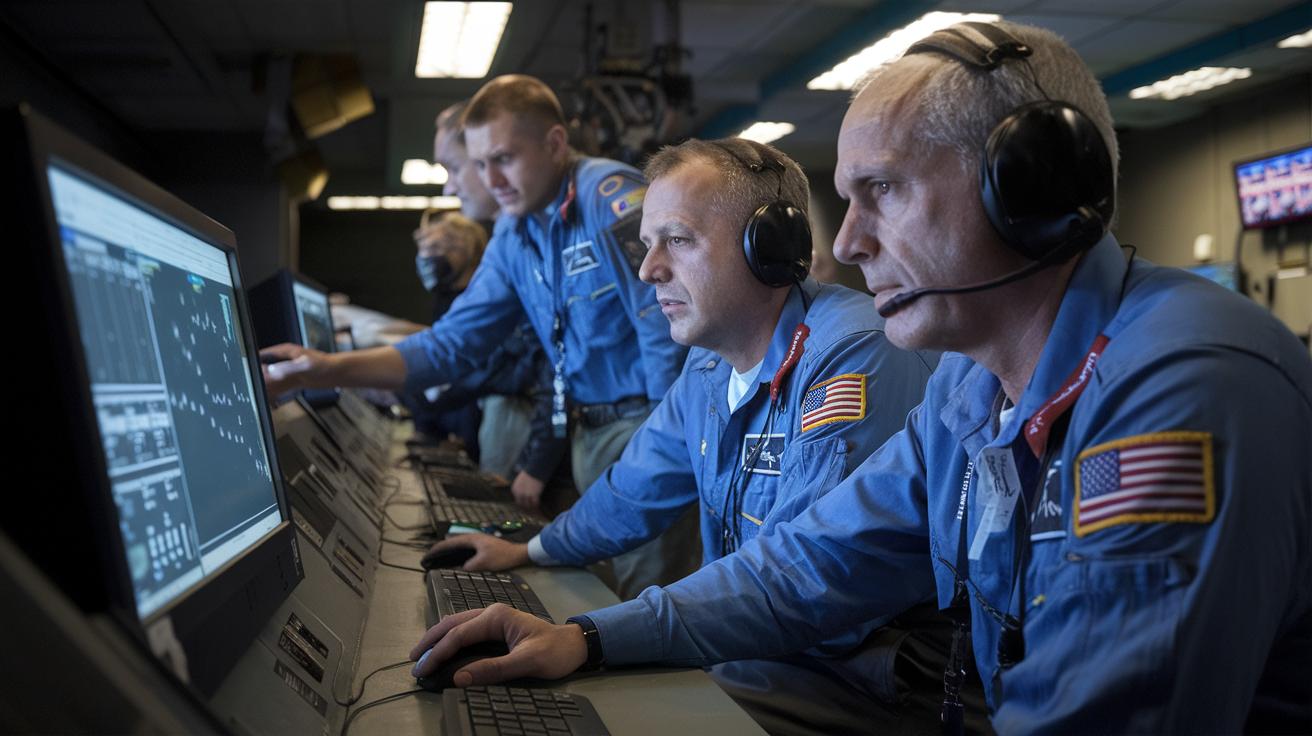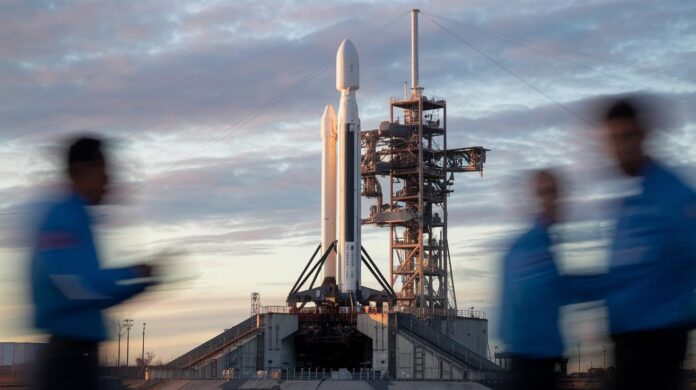In the volatile world of space exploration, failures are more predictable than the successes that capture global attention. With SpaceX's recent setback during the seventh Starship launch, the stakes in rocket engineering have never been higher. A successful liftoff and first-stage booster retrieval marked a promising start, yet, as silence fell 8.5 minutes into flight, a shadow was cast on the achievement. This incident not only tests SpaceX's resilience but also serves as a critical learning point for enhancing future missions. The article delves into the incident, examining its causes, impact, and the path forward for SpaceX.
SpaceX's Recent Starship Loss: An Overview
SpaceX faced a significant setback during its seventh Starship mission when the upper stage was lost post-ascent. The launch commenced as planned, with a successful liftoff and the booster performing as expected. However, approximately 8.5 minutes into the flight, communication with the Starship ceased, leading to the assumption that the vehicle was lost. This incident underscores the technical challenges inherent in advancing space exploration technologies and the complexities involved in developing reusable spacecraft.
-
Launch took place at 4:37 p.m. Central Time from Starbase, Texas.
-
Successful liftoff and booster separation.
-
Booster returned to launch tower for a second successful catch.
-
Starship began its own rocket engines to reach orbit.
-
Loss of communication approximately 8.5 minutes into the flight.
In the immediate aftermath, SpaceX has initiated an analysis to determine the cause of the communication failure and subsequent loss. Initial insights suggest that an anomaly during the ascent burn may have contributed to the incident. SpaceX officials are diligently reviewing telemetry data to understand the sequence of events that led to the failure. This analysis is critical for improving the reliability and safety of future missions, as well as for making necessary adjustments to the Starship program.
Investigating the Causes: Technical Analysis and Expert Opinions

Initial assessments by SpaceX point toward an "oxygen/fuel leak" as a primary factor contributing to the Starship's failure during its seventh launch. This leak likely resulted in excessive pressure within the vehicle, ultimately leading to the loss of the upper stage post-ascent. SpaceX officials are currently engaged in an exhaustive analysis of telemetry data to pinpoint the exact sequence of events that led to this mishap. The initial failure analysis suggests that the anomaly may have occurred during the end of the ascent burn, a critical phase where precision in rocket engineering is paramount. In response, SpaceX is planning to integrate additional safety measures, such as enhanced leak detection systems and the implementation of a fire suppression system.
Potential Engineering Flaws
The possibility of an oxygen/fuel leak raises significant concerns regarding the integrity of the Starship's propulsion system. In rocket engineering, maintaining the right balance of oxygen and fuel is crucial for stable combustion and propulsion. A leak can disrupt this balance, causing pressure irregularities that might compromise structural integrity. Such flaws could stem from material weaknesses, manufacturing defects, or design oversights. The implications are profound, as they necessitate a reassessment of existing engineering protocols and quality assurance measures to mitigate similar risks in future missions. Addressing these potential flaws is vital for advancing the reliability and safety of reusable spacecraft.
Expert opinions on the failure have underscored the complexity of developing cutting-edge rocket technology. Specialists emphasize the importance of rigorous testing and validation processes to identify vulnerabilities before operational deployment. Recommendations include enhancing real-time monitoring systems to detect anomalies early and improving communication protocols to ensure swift response to emergent issues. Some experts advocate for collaborative efforts with other aerospace entities to share knowledge and best practices, thereby fostering an environment of continuous improvement. By addressing these insights, SpaceX aims to refine its engineering strategies and bolster its preparedness for upcoming challenges in space exploration.
Impact on SpaceX’s Starship Program and Future Missions
The recent loss of the Starship's upper stage presents significant challenges for SpaceX's ambitious space exploration agenda, potentially causing delays in the program. This setback may necessitate adjustments to the timeline for upcoming launches as SpaceX conducts thorough investigations to identify and rectify the root causes of the failure. Such delays could affect the planning and execution of future missions, as the company focuses on integrating enhanced safety measures and refining engineering solutions. The incident underscores the complexities involved in advancing reusable spacecraft technology and requires SpaceX to reassess its strategic approach to meeting its space exploration objectives.
-
Review and enhancement of safety protocols.
-
Implementation of new engineering solutions.
-
Consideration of mission timeline adjustments.
- Continued collaboration with partners and stakeholders.
The broader implications for future missions include the necessity to bolster confidence in the Starship's reliability and safety. SpaceX's commitment to overcoming these challenges involves not only technical improvements but also strategic collaborations with partners and stakeholders. By fostering an environment of continuous innovation and rigorous testing, SpaceX aims to mitigate risks and advance its long-term vision of pioneering new frontiers in space exploration. The focus on refining mission protocols and engineering practices ensures that future launches are aligned with the company's goals of achieving safe, sustainable, and successful space travel.
Public and Industry Reactions to the Starship Incident

The recent Starship incident elicited widespread public attention, with images and videos of the debris burning up in the atmosphere rapidly circulating on social media. This visual documentation sparked a mix of fascination and concern among the public, with many users expressing awe at the spectacle and others questioning the safety protocols surrounding such launches. The incident's immediate impact was felt in the aviation sector as well, with the Federal Aviation Administration (FAA) confirming that flights had to be diverted to ensure safety, highlighting the tangible effects of space-related activities on terrestrial operations.
| Media Outlet | Coverage Summary |
|———————|———————————————————————————-|
| CNN | Reported on the incident, emphasizing the challenges SpaceX faces with Starship. |
| BBC News | Focused on the flight diversion and safety concerns raised by the incident. |
| The Verge | Highlighted the technical aspects and potential engineering flaws involved. |
| Space News | Discussed the implications for SpaceX's future missions and program adjustments. |
From the perspective of the aerospace industry, the Starship loss underscores the inherent risks associated with pioneering reusable spacecraft technology. Industry experts acknowledge the complexities and challenges SpaceX faces in advancing its ambitious space exploration goals. This incident serves as a reminder of the rigorous testing and iterative processes necessary for technological breakthroughs in space travel. The event could influence current trends by fostering more collaborative efforts among aerospace entities to enhance safety and reliability through shared knowledge and best practices.
SpaceX's Strategic Response and Future Plans
Elon Musk's response to the Starship incident was characteristically candid, acknowledging the unpredictable nature of pioneering space exploration while ensuring a degree of public engagement. Musk remarked on the uncertain success of the mission, yet guaranteed a level of entertainment for those following the event. In the wake of the loss, SpaceX promptly initiated a thorough investigation into the root causes of the failure. Immediate actions include a comprehensive review of telemetry data and the implementation of interim safety protocols to mitigate similar risks in subsequent launches. This proactive approach underscores SpaceX's commitment to refining its processes and reinforcing the resilience of its spacecraft technologies.
Planned Engineering Enhancements
SpaceX is undertaking a series of engineering enhancements to address the issues highlighted by the recent Starship failure. Among the primary initiatives is the integration of enhanced leak detection systems, aimed at identifying potential oxygen or fuel leaks that could compromise vehicle integrity. Additionally, SpaceX plans to incorporate a fire suppression system to manage any emergent combustion risks during critical flight phases. The Starship involved in the test already featured several upgrades, including a redesigned avionics system and more powerful flight computers, which will continue to evolve in response to the latest findings. These enhancements are crucial for bolstering the safety and reliability of SpaceX's launch vehicles.
The roadmap for future missions involves a strategic focus on overcoming current engineering challenges and ensuring the Starship program aligns with SpaceX’s long-term vision. This includes rigorous testing phases to validate the new safety measures and engineering solutions before operational deployment. SpaceX remains steadfast in its commitment to pushing the boundaries of space exploration, fostering innovation, and maintaining transparency with stakeholders and the public. By continuously improving its technologies and protocols, SpaceX aims to pave the way for sustainable and successful missions that advance human presence beyond Earth.
Final Words
Amidst SpaceX's recent loss of Starship during its seventh launch, the milestone event underscores challenges inherent in advancing space exploration. The engineering community awaits comprehensive data analysis while considering future preventive measures. Despite setbacks, SpaceX remains steadfast, focusing on safety protocols and strategic enhancements to propel forward. With the aerospace industry paying attention, SpaceX's commitment shines through, aiming to refine and optimize their Starship program. As SpaceX loses starship, lessons learned today chart a pathway for future innovations and mission success, promising an exciting frontier in space exploration.
FAQ
Q: Did SpaceX lose a Starship?
A: SpaceX lost the upper stage of Starship during its seventh launch. Communication was lost approximately 8.5 minutes into the flight after a successful liftoff and booster separation.
Q: What caused the SpaceX Starship prototype failure?
A: SpaceX's preliminary analysis suggests an oxygen/fuel leak led to excessive pressure, resulting in the failure. Investigations are ongoing to identify the root cause and prevent future incidents.
Q: Where is SpaceX Starship now?
A: The latest Starship launch resulted in a loss after the communication cutoff. Current status updates and projects continue to develop further iterations of Starship.
Q: Was anyone on the SpaceX Starship during the incident?
A: No, the Starship involved in the failure was uncrewed, carrying no astronauts during its test flight.
Q: How might the Starship loss affect SpaceX's future missions?
A: The Starship program may face delays while SpaceX assesses and modifies systems. Key areas include safety protocol reviews, engineering solutions, and mission timeline considerations.
Q: What are potential engineering flaws identified by experts in the Starship failure?
A: An oxygen/fuel leak is considered a primary flaw, with implications for future rocket engineering designs and safety measures to prevent similar issues.
Q: How did the public and industry react to the SpaceX Starship incident?
A: Public reaction included widespread sharing of debris images on social media, highlighting reuse technology risks. The aerospace industry acknowledges challenges while continuing to innovate.
Q: How does SpaceX plan to respond strategically to the Starship incident?
A: SpaceX intends to enhance safety measures by addressing leak issues and implementing a fire suppression system. The focus remains on engineering solutions and advancing mission readiness.


